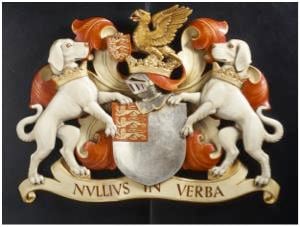 There was a time when it was not fashionable for managers to associate with front line employees. Alluding to an old adage, I used to joke that you could not even lead the horse (manager) to water, let alone make him drink. Division of labor at that time was a great divide. In my early days as a manager, visiting with front line employees was frowned upon as “fraternizing”. Managers stayed on the margins, managing from a safe distance.
There was a time when it was not fashionable for managers to associate with front line employees. Alluding to an old adage, I used to joke that you could not even lead the horse (manager) to water, let alone make him drink. Division of labor at that time was a great divide. In my early days as a manager, visiting with front line employees was frowned upon as “fraternizing”. Managers stayed on the margins, managing from a safe distance.
Today the divide seems to be narrowing for some organizations. Thanks to the popularization of manager standard work and emphasis on business culture (referred to twenty-five years ago as “fluff”), managers are now adding Gemba walks to their busy schedules. So – that’s progress. We can now lead the horse to water. But can we make him drink?
“Why are we here?” I asked Lorie the sales manager as I accompanied her to a sales order department. “According to my standard work, I’m to look for abnormalities.” “So, what do you see?” I asked. Pointing to some numbers written in red ink on a huddle board at the edge of the department Lorie noted, “I see that we’re taking too long to respond to quote requests.” I asked, “What do you actually see here at the huddle board?" Thinking for a second, she responded, “a record of quote requests.” “So how would you learn more about this apparently abnormal condition,” I inquired. “I’d talk to the supervisor,” Lorie said. “Okay," I persisted, "would that be direct observation of the abnormality?” “No,” Lorie, conceded, “it would be second hand information as well.” Pausing a moment she then argued, “I can’t be out here all day long just watching for slow responses to quote requests.” Without disputing the time commitment issue I asked, “Do you have even fifteen minutes to watch the process that produces the quotations?” “Yes, I do,” said Lorie. “Good, let’s see how many abnormalities we can observe in that length of time.” With that we left the margins of the sales order department and went to where the work was done. Here is what we observed:
- A computer system stalled according to the sales associate by “some buffering problem” that IT was working on.
- An incorrect price list, which needed to be verified and approved.
- An inconsistency between the customer’s and manufacturer’s drawings.
- A phone coverage issue. Quotes from different time zones frequently generated abnormal quote times.
- Escalation challenges. When technical questions were not directly answerable, the path to the correct answer was not always clear.
This is a partial list of process abnormalities, not all from one order writer or a single order, but most directly observable within the fifteen-minute time frame and all coming direct from the front lines. “What will you do now?” I asked Lorie. “I guess I need to go see for myself more often,” she said.
In many cases, we have led the horse to water but he is still thirsting for the truth. The idea of direct observation continues to be foreign to many managers who feel that division of labor dictates they get their information second hand, massaged, summarized and homogenized. Change leaders would do well to remind managers of the motto of the Royal Society, the seat of modern science and philosophy: “Nullius in verba” - a Latin expression meaning “take nobody's word for it.” This gold standard of objectivity encouraged scientific thinkers not to let status quo politics and prevailing beliefs affect their thinking. If we are truly seeking a culture change to our organizations we need to encourage the same thinking from our leaders.
In your organization, have you led the horse to water? Has he/she drunk? Share a story.
O.L.D.
P.S. A few reminders:
In my next Tea Time with the Toast Dude webinar, on Tuesday, November 18, I'll discuss "Making Huddle Boards Work". Hope you can join in the conversation. Register here.
Also, I'm excited to be leading the upcoming Shingo Institute course - "Discover Excellence" - at Ken's Foods in Marlborough MA on November 6-7. Seats are still available. This foundational workshop introduces the Shingo Model, the Guiding Principles and the Three Insights to Enterprise Excellence™. With real-time discussions and on-site learning, the program is a highly interactive experience and designed to make your learning meaningful and immediately applicable to release the latent potential in your organization and achieve enterprise excellence. Read more and register here.

